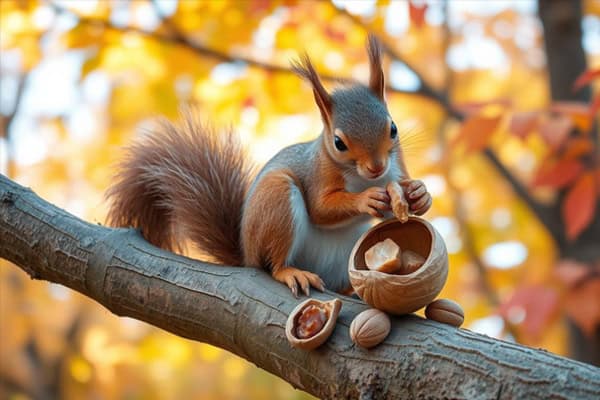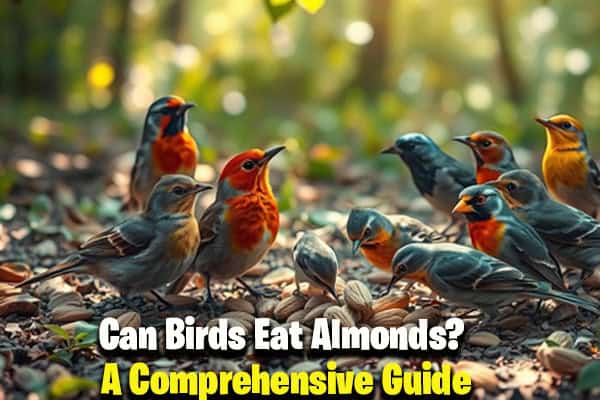What Do Rooks Eat: A Guide to Corvid Cuisine
Ever curious about the rooks’ diet? These intelligent birds have unique eating habits that change with the seasons. Knowing what rooks eat can make watching wildlife more interesting and help you attract them to your garden. Let’s explore their feeding habits and how to safely bring them closer.
Understanding Rook Diets
Rooks have a fascinating omnivorous nature. They eat a wide variety of foods, from insects to small mammals. Their rook feeding behavior shows they are great at finding food wherever they go. This diet diversity helps them survive in different places, thanks to their unique rook foraging habits.
The Omnivorous Nature of Rooks
These birds have strong, pointed beaks perfect for digging up earthworms and insects. Their adaptability is key to their survival. The omniporous nature of rooks lets them use many food sources, making sure they get what they need all year.
Seasonal Feeding Habits
Rooks change their diets with the seasons. In the cold months, they eat high-fat foods like peanuts or suet. But when spring comes, they look for protein-rich foods, such as insects and small mammals. These are important for breeding.
Knowing about their seasonal diet can help you attract rooks to your garden. Offering the right foods at the right time can really help.
What Do Rooks Eat
Rooks have a varied diet, using many rook food sources in their environment. Knowing what they eat helps us understand their foraging and nutritional needs. Here are some common foods for rooks and insights into their eating habits.
Common Edible Items for Rooks
Rooks eat a wide variety of edible items. Their diet often includes:
- Meat
- Eggs
- Nuts
- Fruits (such as grapes)
- Grains (especially barley and corn)
- Peas
These foods are key to rook nutrition. They provide the nutrients rooks need for health and energy.
Insects, Grains, and Other Foods
Insects are crucial for rooks, especially in areas with rich soil. Earthworms are a big part of their diet. They also look for grains, especially in farms. Their adaptable eating habits help them survive by using resources like:
- Barley
- Corn
- Wheat
- Other grains typical of their environment
This shows how rooks are good at finding typical rook foods. These foods are key for their energy levels.
Limitations of Their Diet
Rooks eat a lot of different foods, but they face dietary limitations. In cities, they often find fewer natural foods. This can lead to health problems like:
- White feather syndrome
- Metabolic bone disease (MBD)
Having a balanced diet is crucial for their health and breeding. This shows why it’s important to feed rooks right.
Feeding Rooks in Your Garden
Setting up feeding stations is a great way to draw rooks to your garden. It makes sure they have a safe spot to eat. Use a shallow dish for water and a tray for food in an open spot. This lets rooks land and take off easily.
Creating a Safe Feeding Station
Pick a spot for your feeding station that’s easy to see but also safe. This makes rooks feel secure when they come to eat. Keep the area clean to avoid pests and bacteria that could harm the birds. Check the area often to keep it safe for rooks.
Types of Foods to Offer
Offering different foods is important for rooks. You can give them:
- Suet
- Nuts
- Fruits
- Grains
This mix meets their varied diet needs and keeps them healthy. Switching up the food keeps their diet balanced. But, don’t give them too much bread as it’s not good for their health.
Maintaining Healthy Feeding Practices
Keeping feeding stations clean is crucial. Clean and disinfect the area often to prevent diseases among birds. Always have fresh water available as rooks need it to soak their food. Change the water often. These steps help keep the rooks healthy and improve their experience at your feeding station.
The Importance of a Balanced Diet
Feeding rooks a balanced diet is key to avoiding health problems from bad nutrition. Without the right food, rooks can get sick with issues like white feather syndrome and metabolic bone disease. These problems come from not getting enough calcium, phosphorous, and protein. It’s important to make sure rooks get the nutrients they need.
Potential Health Issues from Poor Nutrition
Poor eating can cause many health problems in rooks. It’s important to watch for signs that they’re not getting enough to eat. Without the right nutrients, rooks may suffer from:
- White Feather Syndrome: A condition that affects feather quality.
- Metabolic Bone Disease: Results from not getting enough calcium and phosphorous.
- Weak Immune System: Makes it harder for them to fight off infections.
Complementary Feeding Strategies
Using good feeding strategies can really help rooks stay healthy. Here are some important tips:
- Seasonal Variety: Give them different foods based on what’s in season.
- Age-Specific Dietary Needs: Change what you feed them based on their age.
- Observation: Watch what your local rooks like to eat to give them the best food.
By doing these things, you help rooks stay healthy and do well in their natural homes.
Also, Read My Previous Articles
| Black and White Birds |
| How Long Do Wood Pigeons Live? |
| Blue Birds of North America |
| Large Flightless Birds In The World |
| Blue Jay Sign From Heaven: A Spiritual Message |
Conclusion
Learning about a rook’s diet is key for those who want to connect with these interesting birds. Knowing what they eat helps you build a good relationship with them. This guide shows how rooks eat a wide variety of foods, changing with the seasons.
Using a feeding guide for rooks helps you give them a balanced diet. You can offer grains, insects, or other foods that are good for them. This not only helps the rooks but also makes birdwatching more enjoyable.
Adding these tips to your birdwatching routine lets you enjoy rooks more while helping their health. This chance to connect with nature can turn your garden into a lively spot for these smart birds.







